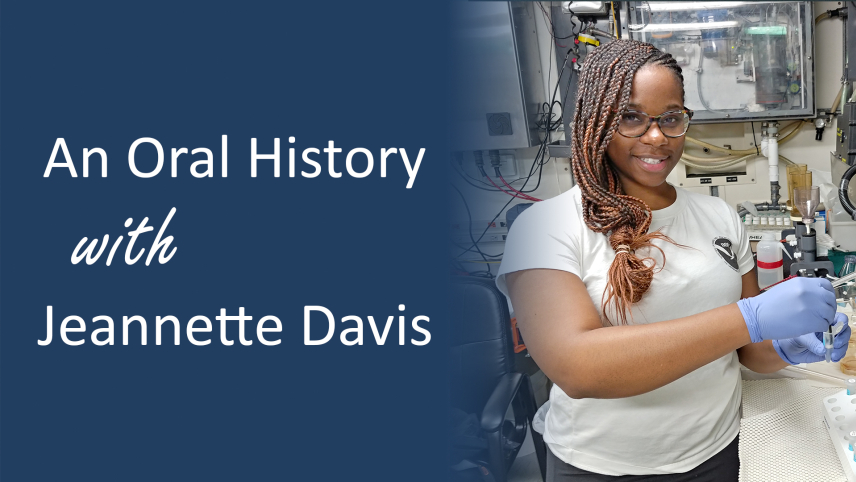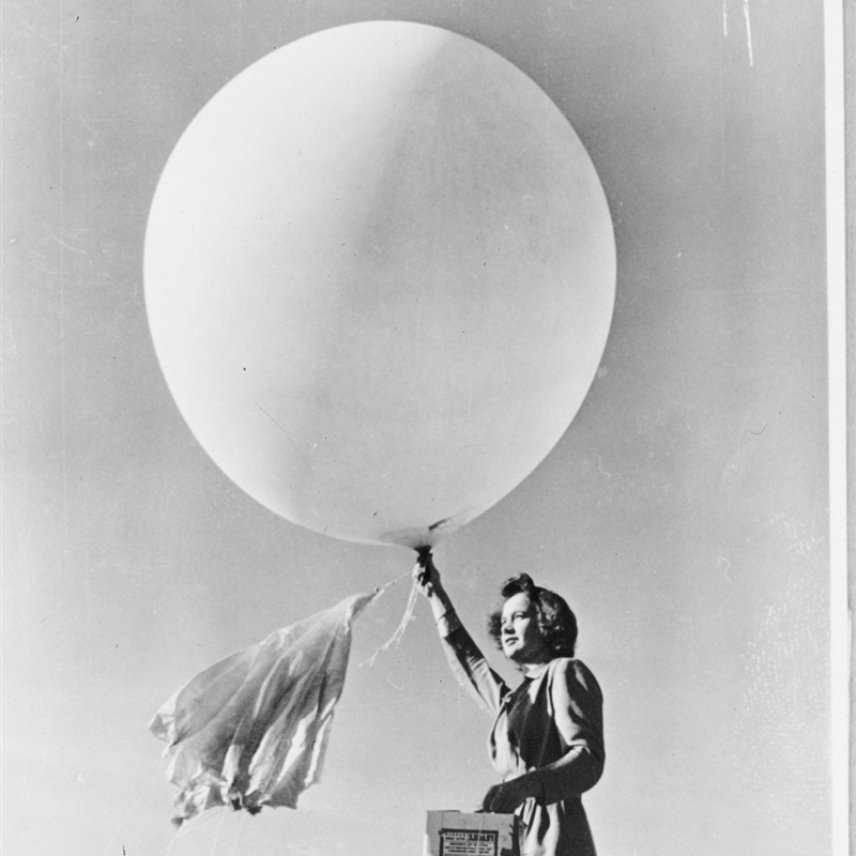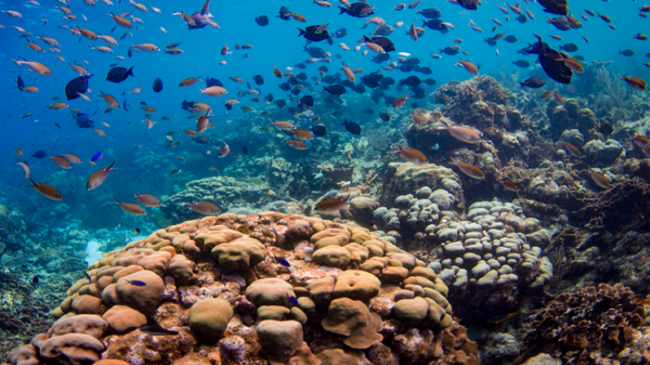
Editor’s Note: This oral history was conducted by Molly Graham in 2019 as a part of the NOAA 50th Anniversary Oral History Project.
These days, Dr. Jeanette Davis works more on strategy and reports rather than in a lab for NOAA Fisheries, but she has loved science from an early age. In fact, it influenced her to write a children’s book to help them understand and appreciate the science in their everyday lives.
Dr. Davis joined NOAA after finishing a Knauss fellowship where she worked on sea turtle assessment proposals and co-authored a National Bycatch Report. At NOAA, Dr. Davis is the invasive species coordinator, which allows her to work across different agencies on invasive species activities. She also works on ‘omics, which is the application of cutting-edge methods to analyze DNA, RNA, or proteins to better understand the ocean and Great Lakes.
Hear a snippet of the interview recorded Dec. 5, 2019:
Transcript:
On becoming interested in science at a young age:
JD: I was always interested in science, yes. Even when I didn’t know it was science, I was always interested in science. By the time I could understand that I was interested in science in elementary school, I always had great science teachers. I think they could at least see my interest in science and how engaged I was. By the time I got to high school, it was obvious that science was my thing, and history.
That was quite interesting, growing up. I always loved going outdoors and trying new things and experimenting. Even as a child, I would gather things and put them together or try to make something or create something. I could just do that all day long. I was always inquisitive and asked questions. I think my parents understood that I was a bit different from the rest. They just allowed that and encouraged that. [laughter]
On getting into the field of ‘omics through graduate work:
JD: I’m a microbiologist. However, if you’re a microbiologist, because you can’t see what you study and because you don’t physically carry a microscope everywhere, you understand things at the molecular level, which is like DNA, RNA, protein stuff. Much of my background up until that point had been – how do I say – it wasn’t that level of detail of science. It wasn’t necessarily molecular biology. It was marine science. So I had all of these different sciences, but not a lot of core molecular stuff.
[...]
JD: My project, unlike others in the lab who worked on sponges, I worked on a sea slug. For most of the work in the lab, it was basically understanding bacteria associated with different marine invertebrates. Most of the time, it was sponge. Once you get those bacteria, you might see if they produce any interesting compounds or a hit, you screen them for interesting compounds. From there, you develop this story, figure out who’s doing what. My project was different in that we already knew the compound. It was already a promising anti-cancer compound extracted from the slug and the slug diet, which is some algae. That had already been discovered. Our role, instead of trying to find something new or find something that produces something new, we knew that something produced what we wanted. So it was almost like working backward. Instead of saying, “I found this thing and could it produce something,” it’s like, “Something can produce this thing, and so how do we find that thing?”
My lab hadn’t been to the sampling site, which was Hawaii for my project, in years before I got there. So we didn’t have any fresh samples. So my first few years, again, I’m taking classes. I’m working with frozen materials. Things are not working because samples are degraded. I had a chance to work with other people in the lab on their projects and go to one of our main sampling sites in Key Largo and do a whole bunch of stuff there. Then, finally, I think two years [later], in 2010, I got a chance to go to my sampling site in Hawaii, which was a game changer because things started picking up from there. I actually had fresh material to work with. It was tasking. [laughter]
Essentially, through this technology, of part of what I work on here [at NOAA] is this thing called eDNA. So all living things have DNA, and eDNA is environmental DNA. It’s just a way of looking at DNA in the environment. The same way at a crime scene if someone leaves their DNA behind, you can say, “This is who they are,” you can do the same in the environment. You can never see it, and just collect DNA and say, “This is who they are,” because their DNA is left behind. What I was doing was if this slug – I know this slug is here, and the algae is here, and I know this anti-cancer compound plays a role somewhere. I then looked at all of their DNA possible and said, “There is a code to produce this compound,” because DNA is the code for life and things, right? So there’s a code that produces this. So I looked at all the DNA and then said, “This DNA sequence matches this product, and it’s produced from this bacterium.” That’s the simplest way of putting it. It was a lot of molecular biology, a lot of understanding DNA, RNA, proteins, metabolites. Metabolites are essentially the small molecule that we were looking for, which is a defense compound for the organism, but it’s the anti-cancer compound for humans. They’re the same.



